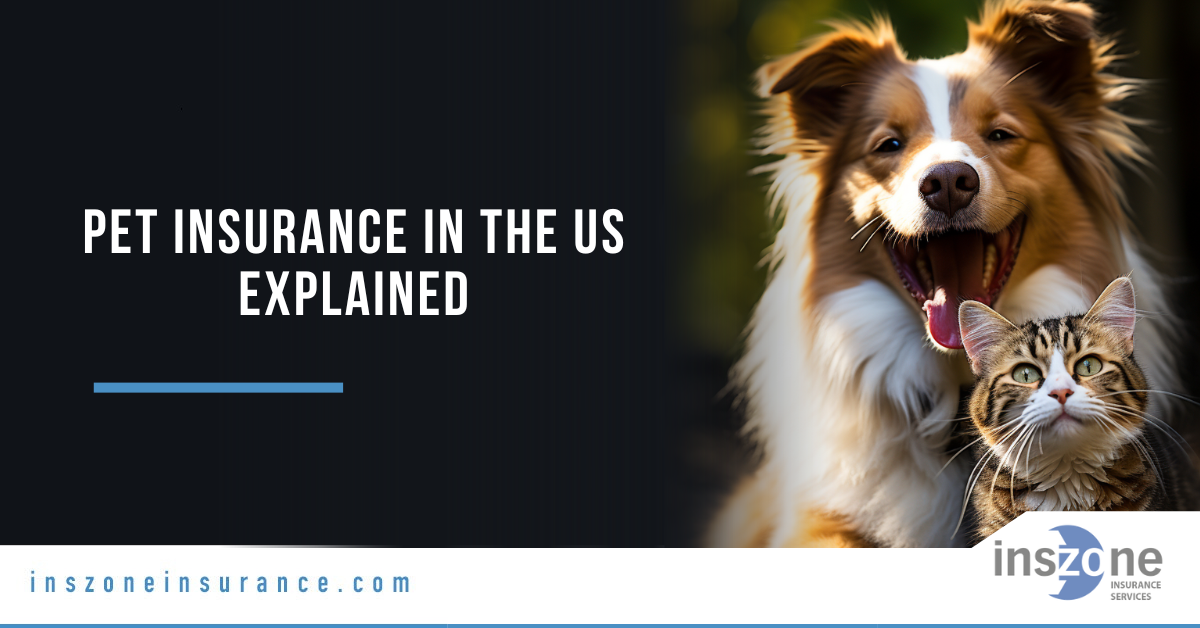As a pet owner, you love, cherish and care about your little furry friend and treat them as a member of your family. Just like humans, pets need preventative health care. However, no matter how well they are taken care of, unexpected incidents always come; accidents, illness and others may come anytime, and these can become expensive.
According to Euromonitor International Voice of the Consumer: Lifestyles Survey 2023, 69% of pet owners globally consider their pets to be beloved members of their families.
How would you prepare to protect your furry companions while also avoiding future stresses in your finances?
Simple, with pet insurance.

What Is Pet Insurance?
Pet insurance works in much the same way as health insurance works for us, helping us to ease the financial burden that can come when our pets require medical treatment or if they suffer an accident.
And same as our insurance version, this came with range of policies to choose from, it has monthly premiums, annual deductibles, copayments and exclusions. However, it goes by a reimbursement process, where you pay out of pocket and the insurance provider refunds a portion of it depending on your type of coverage, typically 70-90% of the total cost.
What does pet insurance cover?
There are several types of coverage options, these ones are the most common:
Accident Only
Let’s say your dog Max or your sweet cat Meme was running along your neighborhood when suddenly, he/she got hit by a car. You took him/her to the vet, where you find out that he/she has a bone fracture.
This insurance option would only cover the accident. It offers coverage for vet fees that are a result of a sudden and unexpected injury that is within a policy period.
Time Limited Cover
This pet insurance lets owners get a set amount for a pet’s issue over a certain time, often 12 months. Once you hit that time or amount, you can’t claim more for that issue. You can renew the insurance, but it won’t cover the same issue again. It’s a good choice for older pets that might get sick or pets healing from injuries.
Maximum Benefit
This is seen as a middle-priced choice. It covers each new health issue up to a money cap. As the pet owner, you can claim for the same problem multiple times over the years.
Lifetime
This is the top-tier insurance that gives the best protection for your pet. It covers your pet for their whole life if you keep renewing it every year. Different insurance companies might offer different versions of this policy.
What to consider before buying Pet insurance
-
Age
Your pet’s age matters. Younger pets are usually healthier, while older ones might have more health issues. It’s a good idea to get insurance before they turn 8, as finding coverage becomes harder as they age.
-
Your Current Location
Vet expenses such as emergency situations or accidents vary from state to state. For example, you can expect to pay between $3,000 to $8,000 for a big emergency, and the cost can come down to location.
-
Type of Breed
Different pets have different health issues based on their breed. For instance, big purebred dogs often face costly joint issues like hip or elbow problems and ligament tears. Other breeds might have heart or inherited health problems.
-
Number of Pets
If you have more than one pet, it’s advisable to have a multi-pet policy as you may receive a discount.
Frequently Asked Questions
How about pre-existing conditions?
Pre-existing conditions are health conditions that occurred before the pet insurance policy’s start date. Therefore, any claims on health conditions that are documented prior to the policy effective date will be excluded from coverage. This means that any claims you make on the pre-existing condition will be denied.
It is highly suggested to get pet insurance as soon as possible for your pet. The longer you delay, the more chances that your pet will experience health issues that would be deemed as pre-existing conditions.
What are congenital and hereditary conditions?
These are terms that are commonly used but are not clear to pet owners:
Congenital conditions are not related to genetics. These conditions happened while pets are developing in utero. For example, heart defects, defects in organs and limbs.
Hereditary conditions are related to your pet’s genetics. Examples of hereditary conditions are cherry eye, hip dysplasia, and diabetes.
Are pedigree pets more expensive to insure?
Pedigree pets are usually more valuable therefore they have a higher possibility of being stolen, hence, will be likely to be more expensive to insure. Another issue is, due to close breeding, pedigree pets are known to be prone to genetic complications and this makes them considered as high risk for any insurer. Make sure to check for exclusions for these conditions in the coverage before signing the documents.
Are there any age limits for pet insurance coverage?
There are certain guidelines, for example, Dogs can be accepted up to the age of 8 (5 for some select breeds), Rabbits at 5 and Cats up to 10 years of age. This varies from one insurance company to another.
Is it really worth it?
If your pet is insured, you are guaranteed peace of mind. It’s crucial to evaluate your specific circumstances and make an informed decision based on what’s best for you and your pet.
If you have any questions regarding pet insurance, or your specific pet, please do not hesitate to contact Inszone Insurance for the best insurance coverage for your pet.





